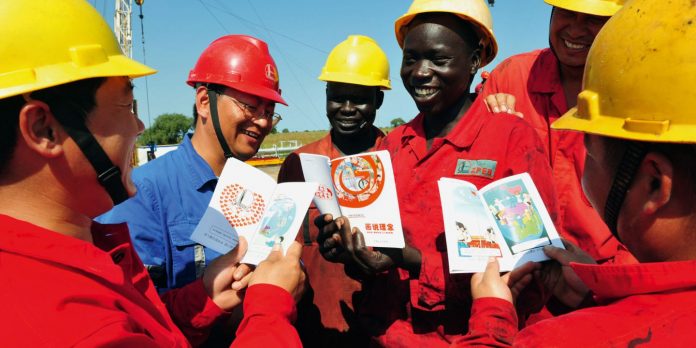
Chinese have an appetite for the African market. The country is now Africa’s largest trading partner. There are more than 10,000 Chinese firms across Africa according to a 2017 study by McKinsey. Africa’s population stands at 1.2 billion and Chinese people living in Africa is at a population of about one million, some temporarily based as construction workers and the latter, legal or illegal business people. Their presence expands across the continent, even with countries like Djibouti, with a population of 972, 344 people, a little below a million.
Earlier this month, Djibouti commissioned a $3.5 billion International Free Trade Zone, being built and financed by china, as part of its Belt and Road initiative. The ten-year project would be managed by the Djibouti Ports and Free Zone Authority, together with China Merchants Holdings. Aboubaker Omar Hadi, who is the chairman of the Djibouti Ports and Free Zone Authority in March, 2016 told Reuters the free zone would create 150,000 direct and indirect jobs, calling it the country’s first employment reservoir. Much like it, China now hosts a military base in the same country, along with countries like France, USA, Japan also occupying military bases in the small country of Djibouti. Perhaps another feat in China’s infrastructure agenda in Africa is the construction of the $3.4 billion Djibouti- Ethiopia railway, completed in October,2016. The electric railway was 70% financed by the Exim Bank of China, built by China Railway Group and China Civil Engineering Construction. Getachew Betru, chief executive officer of Ethiopian Railways said it would be cheaper and more reliable than travelling by road to Djibouti, as reported by the BBC.
President Xi Jinping on July 21, 2018 was in Senegal to discuss trade, and just maybe, beginning with Senegal to mark West Africa’s inclusion in the Belt and Road initiative. Parts of Southern and Eastern African countries are already part of China’s US$ 900 billion Belt and Road programme, which is to recreate the old Silk Road trading routes between Asia and the rest of the world. President Xi Jinping on July 23,2018 was in Rwanda, still as part of his tour in four African countries. The Chinese president signed 15 bilateral agreements with Rwanda, including the Silk Road Economic Belt Cooperation.
In Kenya, Chinese contractors built the $3.2-billion Standard Gauge Railway, which was completed in 2017, was financed by loan from china. Transport minister, James Macharia was reported to have said that the new line would boost the country’s GDP, by 1.5%, regardless of concerns raised about the project’s cost. In Ghana, a majority of infrastructure projects were all financed with loans from china.
Almost every country in Africa is in terms or has contracted China for loan funding of its infrastructure. Chinese foreign direct investment (FDI) to Africa amounts to $66.4 billion and created 130,750 jobs in 2016, according to the Ernst & Young’s Africa Attractiveness report.
While these Chinese aided infrastructural projects may seem as Africa’s way of filling up gaps in its development, others agree otherwise on a not too good Chinese agenda, despite president Xi Jinping win-win slogan in china’s Belt and Road initiative. For instance, with Djibouti’s international free trade zone being constructed by Chinese contractors, Scott Morris, a senior research fellow at the center for global development had this to say in his interview with VOA. “the new free-trade zone will add significantly to Djibouti’s Chinese debt, possibly elevating Djibouti’s risk to an alarming state.” Kenneth Mulindwa, a Rwandan PhD candidate in china said, “East Africans must be careful when dealing with china because countries that have dealt with the global north which china recently joined, we have seen the negative consequences over the years. It leaves the recipient country in a situation where it is paying loans, which sometimes affects socioeconomic development”, Mulindwa told DW in an interview.
Also in the McKinsey 2017 report, titled Dance of the lions and dragons, loans from china, accounted to nearly one third of new sub-Saharan African government debts in 2015, indicating a $5 to $6 billion increase of new loan issuances each year in the 2013-2015 period.
Former US Secretary of State, Rex Tillerson, before his diplomatic trip to sub-Saharan Africa this year was reported to have said “Chinese investment does have the potential to address Africa’s infrastructure gap, but its approach has led to mounting debt and a few if any jobs in most countries. When coupled with political and fiscal pressure, this endangers Africa’s natural resources and its long-term economic and political stability”. Obviously to express the US displeasure with china’s harrowing presence in Africa, which for both as super powers may seem threatening for the US.
Gifty Danso


























